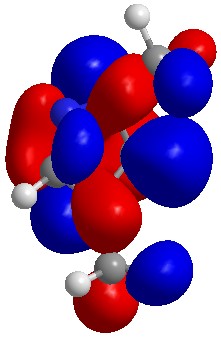The connecting theme of my contributions to AG publications is heterocyclic chemistry, which in my own work relates to drug discovery and medicinal chemistry, a field in which we have a number of successes in anti-infective compounds and anti-inflammatory compounds. Behind all this, however, lies the science and technology of chemical synthesis, the methods by which we are able to make the new chemical compounds that become the drug candidates.
Synthesis, as the name implies, is the building of larger molecules from smaller precursors often by forming new carbon-carbon bonds. Since the 1980s, many really useful reactions have been discovered using palladium as a catalyst, usually wrapped up in a special complex compound. Nobel Prizes to Heck, Negishi, and Suzuki were awarded in 2010 for their discoveries in this field. Whatever the form of the palladium, it is an expensive and often an unrecycled component of the reaction. What will we do when palladium runs out or sooner when palladium becomes too expensive? There are competing uses such as in car exhaust systems and hydrogen storage to contend with.
One solution would be to use other metals with similar chemical reactivity, such as nickel. This is a good possibility but comes with problems associated with the toxicity of nickel-containing compounds. Some years ago and American researcher reported that he could carry out these reactions using potassium salts. This caused as close to a sensation as you can get in synthetic organic chemistry. Unfortunately it turned out that the reactions were actually mediated by traces of palladium impurities in his materials. Other research suggests that an old solution, using copper, is a better bet. It’s no easy matter in any case to substitute what seems to be the ideal catalyst from the point of view of chemical reactivity, palladium.
What then? Well, chemistry can reinvent itself and ways can be sought to carry out the required synthetic transformations without the use of metals like palladium or nickel. Once again, this illustrates an important aspect of heterocyclic chemistry because heterocyclic compounds can provide the necessary catalysts and intermediates to carry out the required bond-forming reactions in synthesis. Sometimes the heterocyclic compounds can be remarkably simple as the work led by my colleague at the University of Strathclyde, Professor John Murphy shows.
John and his collaborators have not only demonstrated synthetic reactions avoiding the use of toxic or expensive metals but have also studied the basic science behind those reactions, what we call the reaction mechanisms. To extract from the title of one of John’s papers, his group is ‘pushing the limits’ of heterocyclic chemistry (1). Through understanding the basic reaction mechanism it is possible to predict what reactions might be possible and how they might be carried out. With this information, another chemist planning a new synthesis would be able to consider seriously avoiding the use of an expensive metal like palladium (2).

With such an important area of heterocyclic chemistry, it’s not surprising that many other chemists are active in the area. One topic that has attracted many around the world is the reactivity of a class of compounds that John has worked with known technically as N-heterocyclic carbenes (NHCs) (Figure). These are very versatile compounds that are capable of setting up many different types of synthetic reaction because they are able to use several different reaction mechanisms (3,4). I think that we might just be at the start of an explosion of discoveries of new chemistry mediated by heterocyclic compounds. What’s needed for the wider chemical community is for the discoverers to show that the new reactions are useful for making compounds that do useful things such as providing medicines or contributing to coloured light sources and not just for making beautiful but museum exhibits of molecules that fascinate only the cultured the chemist. It will take time for the new reactions to find their feet but some of them surely will.
1 – doi: 10.1002/ange.201505378.
2 – doi: org/10.1016/j.tet.2016.05.083.
3 – doi: 10.1038/ncomms12933.
4 – doi: 10.1039/C6CC04154J.








